Go To Market Motion Guide: Strategies For Success In 2025


In 2025, the difference between market leaders and laggards will be defined by the precision and agility of their go to market motion.
B2B SaaS and enterprise software companies face a rapidly evolving landscape. Success now depends on mastering the right go to market motion, adapting to new buying behaviors, and leveraging advanced technology.
This guide reveals proven strategies and frameworks to help your teams win:
- Definitions and evolution of go to market motion
- Core motion types for every stage of growth
- The rising impact of AI and Agentic Automation
- Aligning product, marketing, and sales as a unified force
- Step-by-step action plans and success metrics
Ready to drive pipeline, boost ARR, and position your brand for measurable growth? Dive in to discover actionable insights you can implement today.
Understanding Go-To-Market Motions in 2025
In 2025, the go to market motion has evolved into a multi-dimensional engine for B2B SaaS and enterprise software success. Unlike broader GTM strategy, which sets the overall direction, a go to market motion is the tactical playbook that determines how companies engage buyers, drive adoption, and scale revenue.
Today’s leading companies deploy a range of GTM motions. These include:
- Sales-led motions: Focused on high-touch, consultative approaches for complex enterprise deals, as seen in Twilio’s shift from developer engagement to executive sales.
- Product-led growth (PLG): Relies on self-serve onboarding and viral adoption, exemplified by Figma’s designer-first expansion.
- Hybrid or middle-out motions: Blend user advocacy with early sales involvement to convert free users into enterprise contracts.
Buying decisions are now more complex, with up to 22 stakeholders involved in B2B committees. Navigating this landscape demands tight collaboration between product, marketing, sales, and customer success. Teams must align priorities and share insights to unlock pipeline growth.
Digital transformation and remote buying have made GTM motions more dynamic than ever. Companies that master these motions—by adapting to new channels, leveraging data, and learning from go-to-market strategy examples—will be best positioned to accelerate pipeline and ARR. The future belongs to organizations that embrace agility, cross-functional teamwork, and the power of a refined go to market motion.

Key Go-To-Market Motion Types and When to Use Them
Choosing the right go to market motion is crucial for B2B SaaS and enterprise software growth. Each motion supports different buyer journeys, revenue goals, and product complexities. Let’s break down the three primary types and when to deploy each for maximum impact.
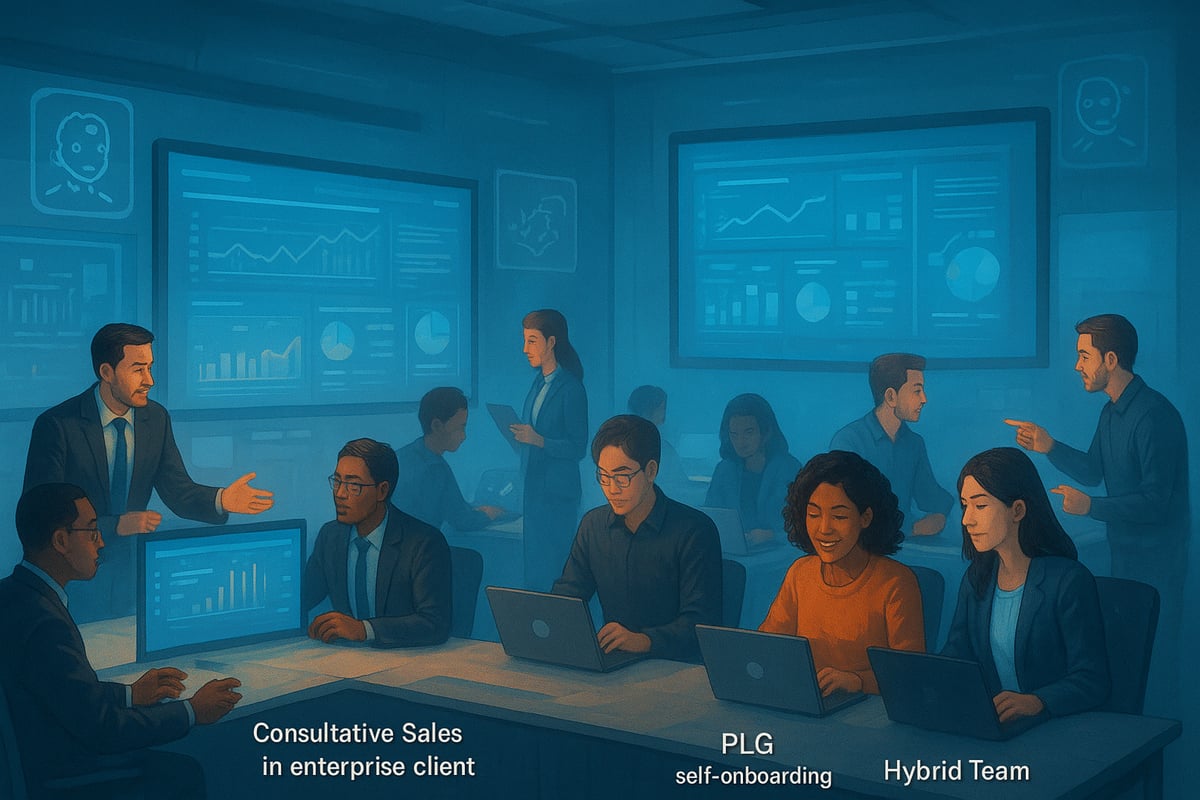
Sales-Led Motions
A sales-led go to market motion relies on high-touch engagement, ideal for complex or high-value enterprise deals. Teams are built around skilled account managers, supported by marketing and customer success.
- Characteristics: Consultative approach, direct buyer access, tailored solutions.
- Pros: Accelerates customer acquisition, maximizes revenue per deal.
- Cons: Less scalable, resource-heavy, slower onboarding.
- Example: Twilio’s evolution from developer outreach to executive sales focus. For a detailed exploration, read Sales-Led Growth in Enterprise.
This motion is best when decision-makers expect guidance and customization.
Product-Led Growth (PLG) Motions
A PLG go to market motion empowers users to self-serve, driving adoption and expansion through the product experience itself. AI and Agentic Automation help surface product-qualified leads and personalize onboarding.
- Characteristics: Frictionless sign-up, viral loops, rapid user adoption.
- Pros: Fast time-to-value, efficient, highly scalable.
- Cons: Lower initial deal size, complex enterprise conversion.
- Example: Figma’s designer-first model, leveraging usage data for expansion.
PLG thrives where users can quickly realize value and influence broader buying committees.
Hybrid & Middle-Out Motions
Hybrid go to market motion types combine the best of PLG and sales-led strategies. Sales teams engage earlier for technical validation or large accounts, while product-driven adoption seeds expansion.
- Characteristics: Blended user advocacy and executive buy-in.
- Pros: Flexible, adapts to varied deal sizes and buying journeys.
- Cons: Operationally complex, needs tight alignment.
Examples include SaaS firms converting free users to enterprise clients, balancing efficiency with high-touch support.
The Rise of AI and Agentic Automation in GTM Motions
Imagine a world where your go to market motion is powered by digital teammates who never sleep, always learn, and orchestrate outreach with surgical precision. This is not science fiction, but the reality of Agentic AI and Agentic Automation in 2025.

Agentic AI refers to autonomous digital agents that execute tasks across the entire go to market motion. These agents can qualify leads, personalize outreach, and manage onboarding journeys, freeing up humans for strategic work. For example, AI-driven sales assistants can schedule meetings, nurture prospects, and surface expansion opportunities in product-led growth motions.
Consider Loom, which saves over two hours per customer by automating onboarding steps through intelligent video workflows. This blend of AI and automation boosts time-to-value and drives customer retention. In the product-led world, AI identifies product-qualified leads and recommends the right touchpoints for conversion.
Agentic AI is also transforming RevOps. Automated dashboards, real-time reporting, and seamless lead routing ensure cross-team alignment and data integrity. According to the B2B SaaS Go-to-Market Strategies: A Complete Implementation Guide for 2025, leveraging AI in your go to market motion can improve pipeline velocity and forecasting accuracy.
Of course, these advances bring new risks. Data privacy, model bias, and the need for human oversight are critical considerations. Still, Agentic AI is quickly becoming the competitive edge for B2B SaaS and enterprise software companies aiming to redefine their go to market motion in 2025.
Aligning Product, Marketing, and Sales for Unified GTM Execution
Imagine a B2B SaaS team where product, marketing, and sales move as one. That’s the power of unified execution in today’s go to market motion landscape. When these groups operate in isolation, pipeline stalls and ARR growth slows. The solution? Break down silos and align every team around shared goals and data.
Breaking Down Silos: Unified Growth Functions
Unified growth starts with cross-functional teams. Leaders set joint OKRs, integrate dashboards, and use shared playbooks. This alignment turns friction into focus, driving 300 percent lead growth at SaaS scale-ups.
- Integrated KPIs guide every department
- Shared enablement resources increase speed
- AI-driven insights reveal hidden opportunities
Many organizations struggle here. If you want to avoid common pitfalls, learn from the patterns in Why Go-To-Market Strategies Fail.
Operationalizing GTM Motions for Scalability
To scale your go to market motion, operationalize every step. Build playbooks covering onboarding, expansion, and renewal. Standardize processes with digital workspaces, mutual action plans, and dynamic sales collateral.
RevOps becomes the backbone, ensuring data integrity and consistency. AI and Agentic Automation automate routine tasks, freeing teams to focus on strategic growth. This approach transforms complexity into clarity.
GTM Consult: Expert Advisory for GTM Alignment
GTM Consult specializes in aligning product, marketing, and sales for rapid revenue growth. Their expert team delivers strategy, enablement playbooks, and market positioning tailored to your go to market motion.
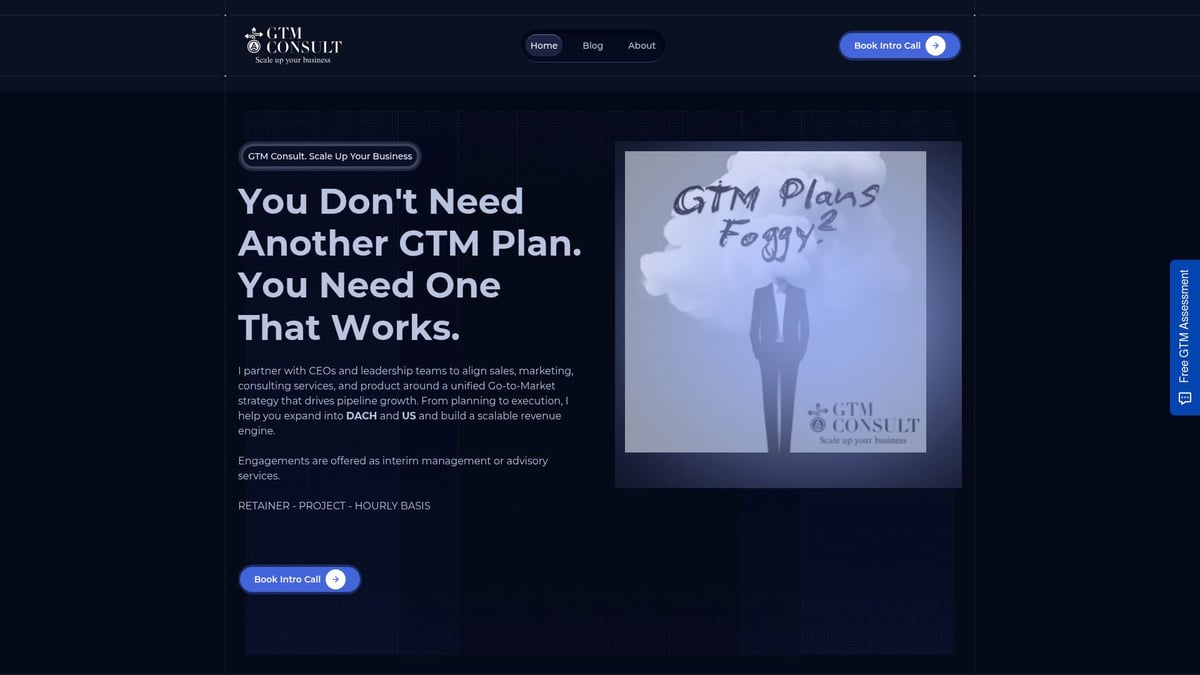
Results speak: xtype.io saw a 60 percent pipeline boost, while Hadean achieved 300 percent lead growth. Flexible advisory, interim leadership, and free GTM assessments help startups and scale-ups thrive.
Step-by-Step Guide to Designing Your 2025 GTM Motion
Designing a high-impact go to market motion in 2025 demands more than intuition. It requires a strategic, data-driven approach, blending human expertise with Agentic AI. Use this five-step guide to architect a motion that drives pipeline, accelerates ARR, and adapts to a complex B2B landscape.
Step 1: Map Your Ideal Buyer and Buying Committee
Start by pinpointing your ideal customer using both qualitative insights and AI-powered analytics. Identify pain points, key decision-makers, and influencers. With buying committees now averaging up to 22 roles, leverage Agentic AI to map relationships and uncover hidden stakeholders for your go to market motion.
- Use intent data platforms for persona profiling
- Employ AI tools for account mapping
- Interview customers for real-world insights
Step 2: Select the Right GTM Motion(s)
Evaluate your product’s complexity, average contract value, and market maturity. Choose the go to market motion that aligns, whether sales-led for high-touch deals, product-led for user-driven growth, or hybrid for flexibility. Consider how each motion fits your team’s strengths and the buyer’s preferred journey.
- Assess fit with sales-led, PLG, or hybrid models
- Analyze historical win rates by segment
- Review competitive benchmarks
Step 3: Build Cross-Functional GTM Teams
Define clear roles across product, marketing, sales, customer success, and RevOps. Foster collaboration through shared goals and digital workspaces. Unified teams ensure your go to market motion is executed with consistency, speed, and adaptability, especially as buying processes become more complex.
- Set joint OKRs and KPIs
- Use integrated dashboards for visibility
- Hold regular cross-team standups
Step 4: Implement AI and Automation
Deploy Agentic Automation to handle repetitive tasks, such as lead qualification and onboarding. AI agents can personalize buyer journeys, optimize outreach, and surface product-qualified leads. This not only scales your go to market motion but frees your team to focus on high-value activities.
- Automate pipeline management with AI tools
- Use AI-driven onboarding to reduce time-to-value
- Monitor AI outputs for accuracy and bias
Step 5: Launch, Measure, and Iterate
Roll out your go to market motion with clear KPIs, such as pipeline velocity, CAC, and LTV. Establish feedback loops, leverage analytics, and refine your playbook continuously. For a ready-made framework, explore the Go-To-Market Plan Template to accelerate execution and optimization.
- Track motion-specific metrics in real time
- A/B test messaging and workflows
- Gather stakeholder feedback for improvements
Measuring Success: KPIs and Optimization for GTM Motions
Success in any go to market motion hinges on tracking the right KPIs and acting on real-time data. With the complexity of B2B SaaS and enterprise software, focusing on impact metrics is essential for pipeline velocity and sustainable ARR growth.
Core GTM Metrics Table
| Metric | What It Measures | Why It Matters |
|---|---|---|
| CAC | Customer Acquisition Cost | Efficiency of spend |
| LTV | Lifetime Value | Revenue per customer |
| Churn | Customer Loss Rate | Retention health |
| MRR/ARR | Recurring Revenue | Growth trajectory |
| ROAS | Return on Ad Spend | Marketing effectiveness |
| Organic Search | Site Traffic | Inbound demand |
Motion-specific metrics, such as Product Qualified Leads (PQLs) for PLG or sales cycle length for sales-led, help teams fine-tune performance. According to The Ultimate SaaS Go-To-Market Strategy for B2B Growth (2025), tailoring metrics to your motion type drives faster iteration and better results.
Agentic Automation and AI Boost Results:
- Instantly qualify leads, personalize outreach, and forecast pipeline.
- Power onboarding: 93% of buyers say onboarding quality affects renewal.
- Automate reporting, enable mutual action plans, and align teams.
Case in point: SaaS companies using mutual action plans have accelerated time-to-value, leading to higher upsell rates and lower churn.
Avoid common pitfalls: siloed data, slow feedback loops, and misaligned incentives. Instead, leverage A/B testing, refine playbooks, and harness Agentic AI for optimization.
In 2025, mastering go to market motion measurement, with AI-driven insights, will be the difference between status quo and market leadership.
As we wrap up this guide, I can’t help but think of my first time navigating the wild world of GTM motions—it felt like standing at a crossroads, trying to pick the right path while juggling way too many balls. If you’re here, I know you’re ready to turn that uncertainty into momentum. Whether you’re mapping out your buyer committees, weighing sales led versus PLG, or eager to see AI and automation actually drive real results, you don’t have to go it alone. Let’s talk about what’s next for your team. Book Your Personal Intro Call and let’s chart your GTM story for 2025 together.

Latest From
The Blog
Go To Market Strategy Consulting Guide For 2025 Success

Go To Market Strategy McKinsey Guide For Success 2025

Crossing the Enterprise Chasm: A Practical Guide to Sales-Led Growth (SLG)


Let's Build The Future Together



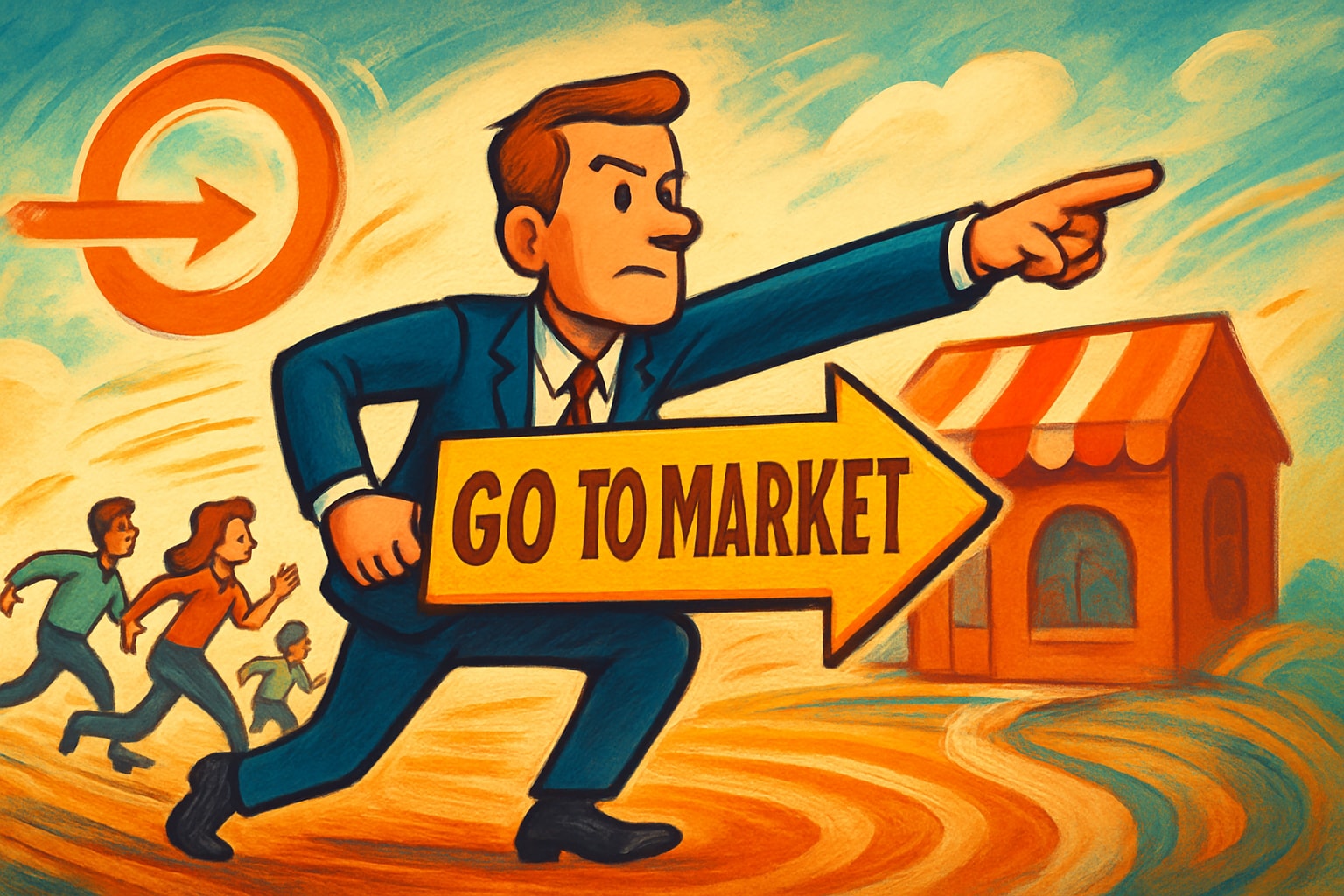
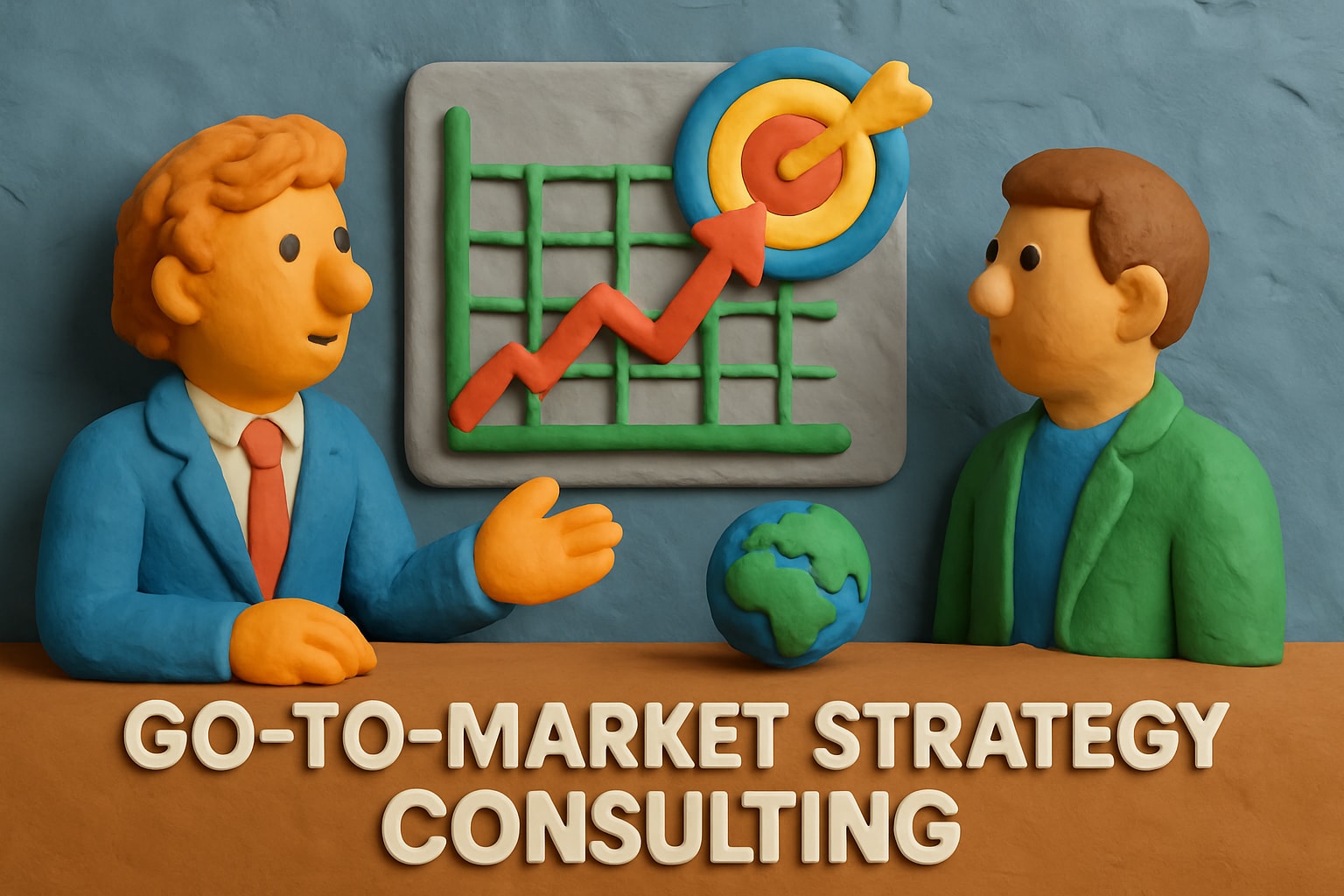
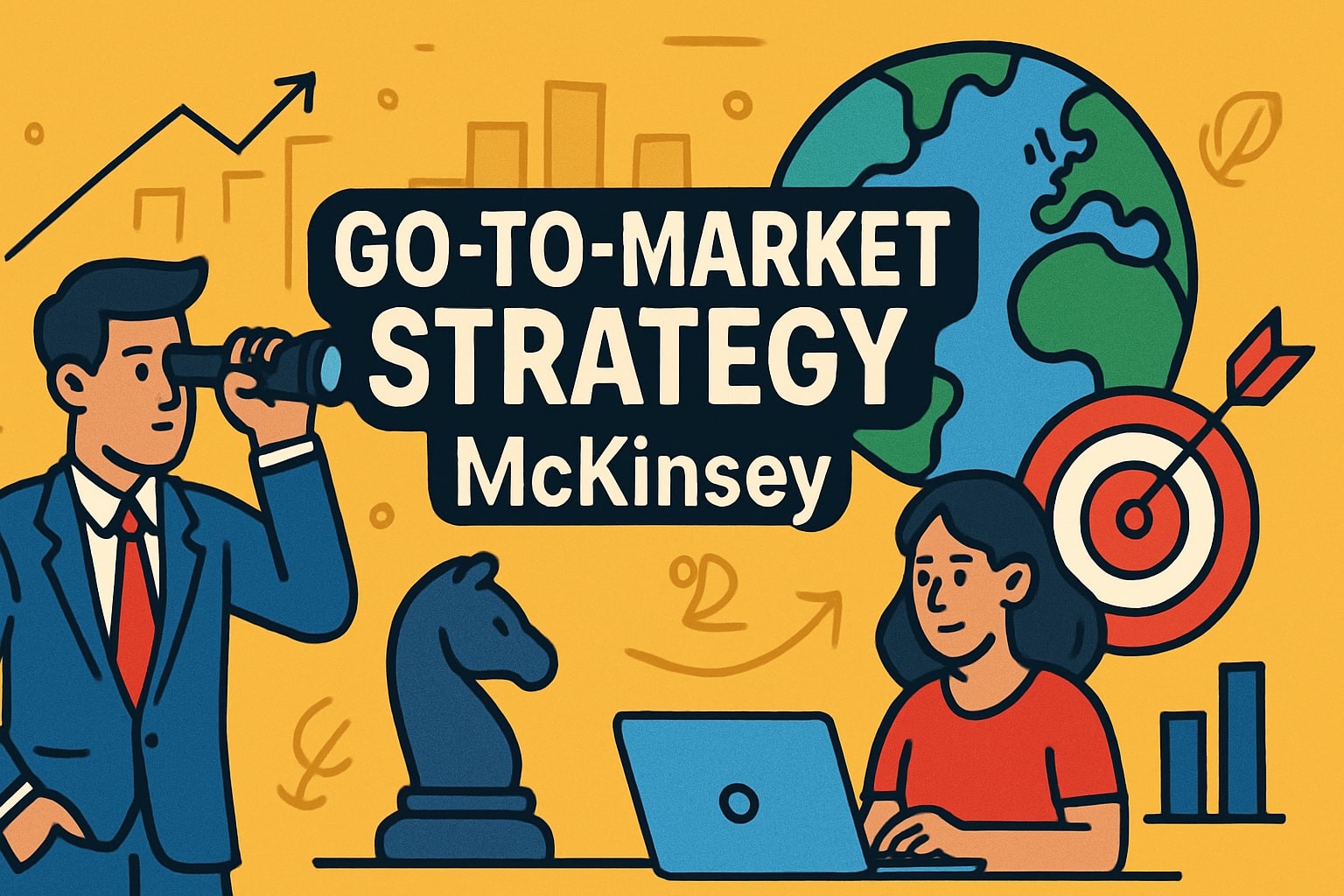
.jpg)